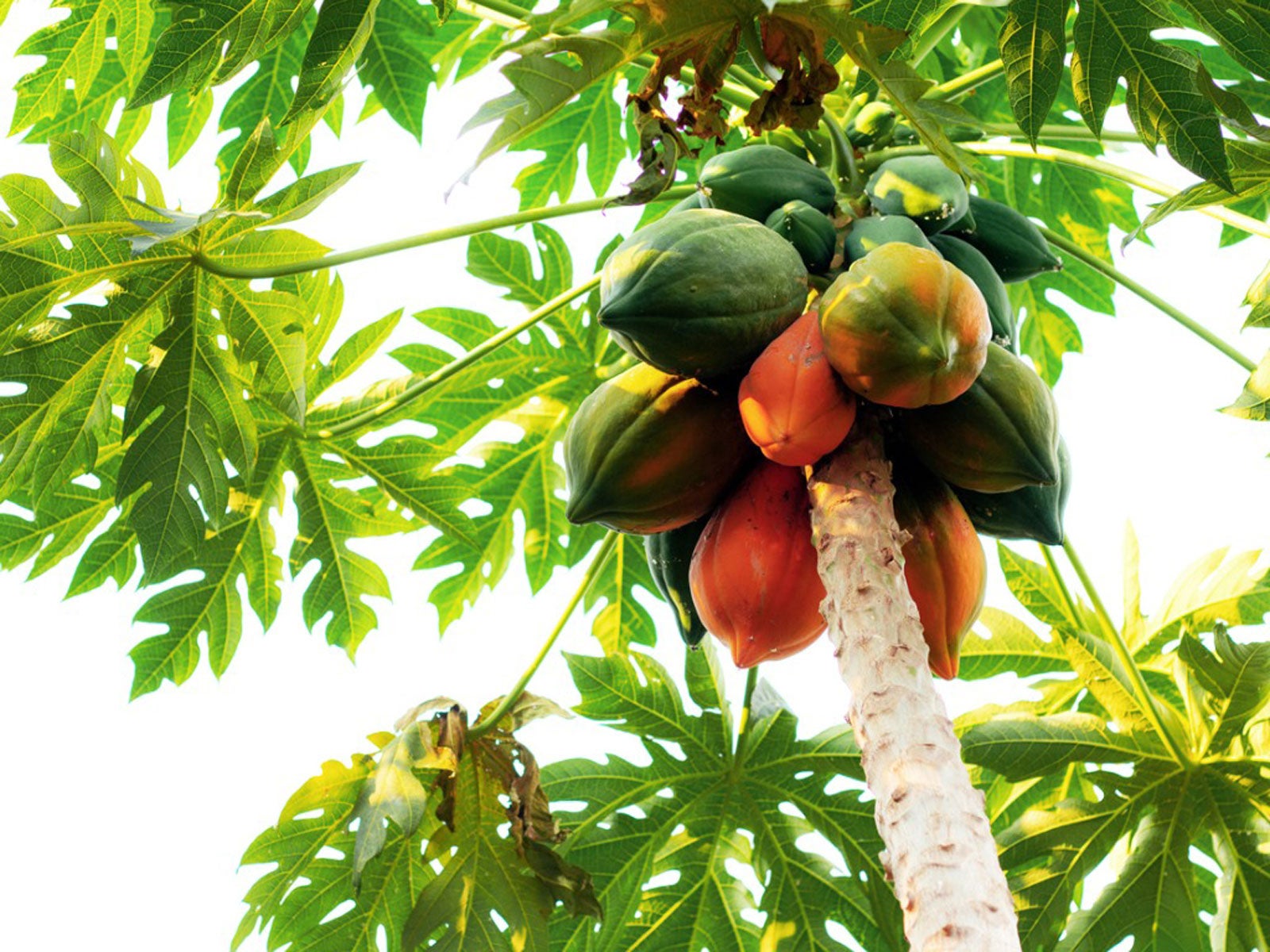Papaya Tree Facts: Growing Info And Care of Papaya Fruit Trees

Growing papaya trees is a great way to enjoy these exotic fruits every year. Papaya trees grow best in USDA growing zones 9 and 10. If you are lucky enough to live in these regions, learning how to grow a papaya tree should likely come naturally. Continue reading to find out more about papaya tree facts and the care of papaya fruit trees.
Papaya Tree Facts
Papaya (Carica papaya) is native to Central America and exists in tropical and subtropical areas throughout the world. This large, short-lived perennial plant with a single trunk can reach up to 30 feet (9 m.) at maturity. Palmate leaves are deeply lobed and over 3 feet (1 m.) in width.
There are three different tree types, female plants, male plants, and bisexual plants. The female and bisexual plants are the only ones that produce fruit. Depending on the tree type, this fruit is small to medium round or medium to large oblong shape. Fruit flesh is generally yellow, although some red and orange types exist as well.
How to Grow a Papaya Tree
Growing papaya trees is generally done from seed that is extracted from ripe fruit. If you are using fruit from a grocery store, it is most likely going to be a bisexual plant. You should plant several seeds per pot to ensure germination. Under full sunlight, seedlings may emerge in about two weeks. Plants can be set out after they are a foot (0.5 m.) tall and spaced 8 to 10 feet (2.5-3 m.) apart.
The seedlings will flower after five or six months. When considering the best papaya growing conditions in the home landscape, don't forget about planting location. The best place to plant papaya is on the south or southeast side of a house with some protection from wind and cold weather.
Papayas also grow best in full sun. Papayas like well-drained soil, and because of shallow roots, growing papaya trees will not tolerate wet conditions.
Care of Papaya Fruit Trees
In addition to proper papaya growing conditions, suitable care of papaya fruit trees is also important. In order for papaya trees to thrive, they require some fertilizer. Provide young plants fertilizer every 14 days using ¼ pound (113.5 g.) of complete fertilizer.
Sign up for the Gardening Know How newsletter today and receive a free copy of our e-book "How to Grow Delicious Tomatoes".
Fertilize older trees with 1 to 2 pounds (0.5-1 kg.) of fertilizer once a month. Also, be sure to take a soil sample and amend it as necessary. Water trees frequently for best fruit production. Mulch trees with 4 inches (10 cm.) of wood chips to help retain moisture, taking care to keep the mulch 8 to 12 inches (20-30.5 cm.) from the trunk.
Protect developing fruit from pests by placing a paper bag over them until they are ripe.